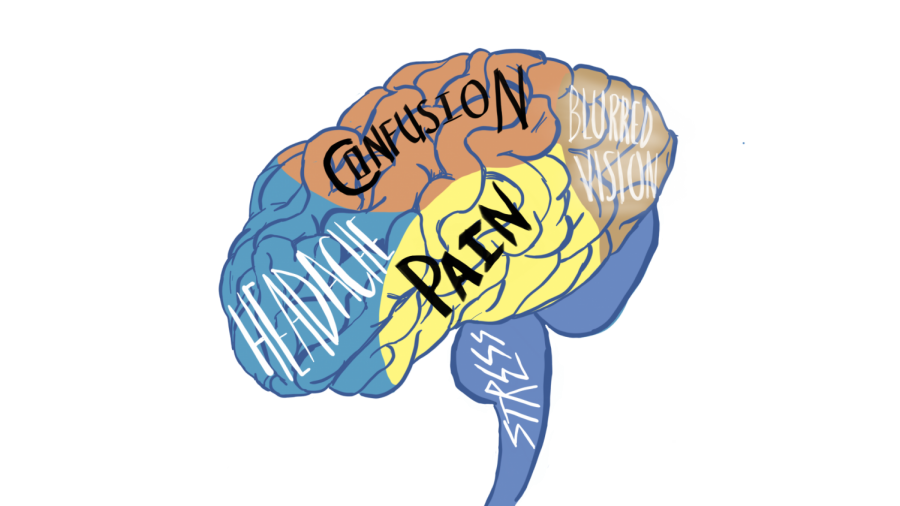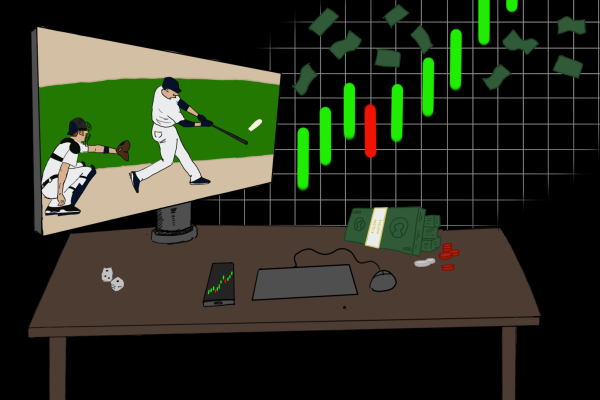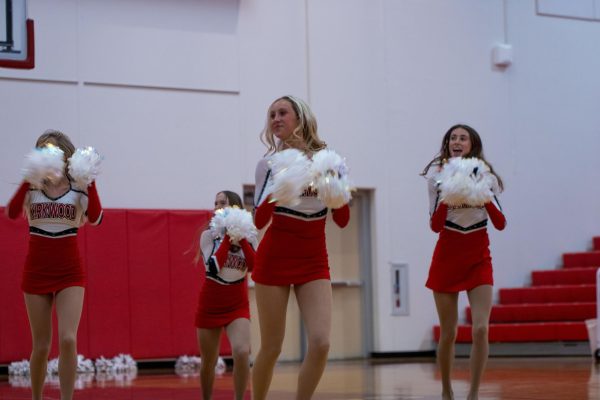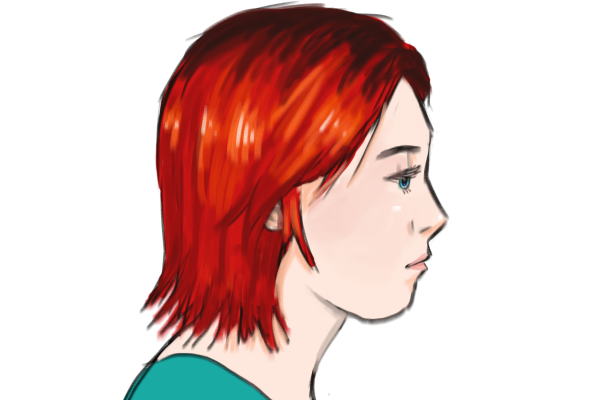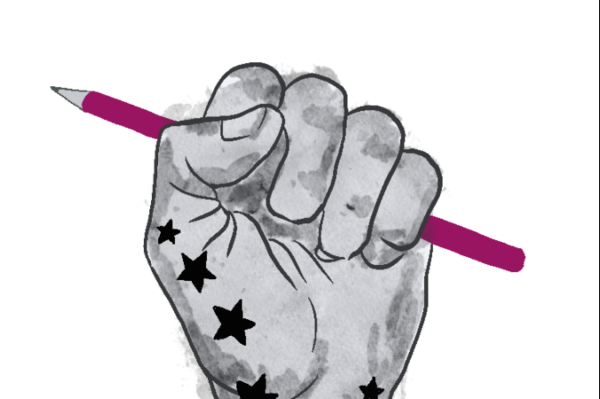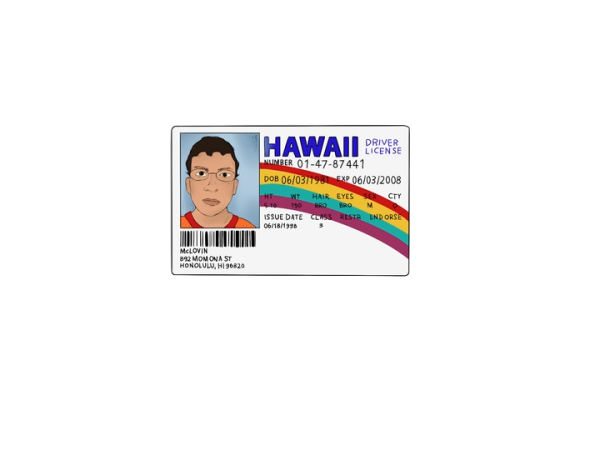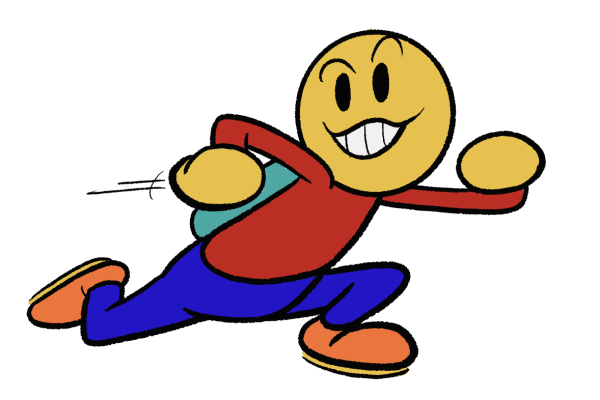Issues: Concussions
art by Grace Mennerick
“Blue 42, set hut!”
The quarterback receives the snap on third and goal and steps back into the pocket. Desperate for a touchdown, he surveys the field looking for an open receiver but comes up empty. Now scrambling to the right, he decides to take matters into his own hands and makes a beeline for the endzone. A 250-pound linebacker approaches his left, preparing for a big hit. Their helmets collide with immense force. The quarterback’s neck whips backward as he crashes to the ground. Clatter of hard plastic helmets hides the severity of what has occurred. Inside the skull of the quarterback, his brain has trembled like an earthquake.
Referees simultaneously throw penalty flags onto the field, but the quarterback is too dazed to notice or care. A fuzzy group of trainers rush out onto the field with concussion assessments on hand. In the case of a KHS sporting event, this would be Brianna Lakebrink, KHS athletic trainer. According to Lakebrink, she checks for initial symptoms on the field before conducting a Sport Concussion Assessment Tool 5 (SCAT5) test on the sideline, a written test used to diagnose a concussion.
“From the crowd it looks like I’m making [the player] do paperwork,” Lakebrink said. “The initial [procedure] is seeing what’s going on and how do they feel. Depending on what they say, whether it’s dizziness or nausea, that’s a clear sign of a concussion.”
Concussions don’t always revolve around the dazed football player, nor do they always result in the same symptoms. According to Lakebrink, concussions occur in nearly every sport and don’t require a major blow to the head. If the brain shakes inside the skull, there will be a concussion, no matter the cause. But the symptoms that occur and their severity depend on the magnitude of the brain movement.
For Morgyn Welsh, senior, severe concussion symptoms appeared a few days after her initial head impact. During a field hockey game in fall 2017, she was hit on the head by the backswing of another player that left a gash in her head and caused considerable bleeding. According to Welsh, she felt fine initially, and was not diagnosed with a concussion on the day of the incident after going to the hospital. However, a few days later, she experienced extreme headaches and returned to the doctor where she was diagnosed with a concussion. Two weeks after her diagnosis, her symptoms had only gotten worse, so she went to see a specialist who recommended physical therapy. According to Welsh, because she jerked her neck back after she was hit, she had whiplash that needed to be addressed. She also experienced vision problems throughout her recovery.
“Sometimes I would have double vision, and my eyes took longer to focus on things than normal,” Welsh said. “In school it would be hard to look at the board and look back down, [which] would cause some of my headaches.”
Welsh remains mentally affected by her concussion today. While it is no longer an everyday occurence for her, she still gets stress headaches before exams or standardized tests such as the ACT. She has returned to playing varsity field hockey after a long hiatus from physical activity, now concussion-free, but has not forgotten the long struggle of recovery.
“It’s been hard to do everyday things,” Welsh said. “I wasn’t able to go out and do stuff with my friends because I wouldn’t feel good. It was hard because [a concussion] is not something you can see, and people sometimes forget that you are dealing with stuff like that.”
In the past, concussions have mainly been treated with nothing but rest. But recently, the preferred method of treating concussions has been a system of gradual recovery. According to Lakebrink, shutting concussed students down completely is not the way to go. Rather, students should be gradually brought back into their normal school and athletic routines, as long as it does not trigger symptoms.
“Rest is definitely something you need, but if you take everything away, your brain actually gets sluggish,” Lakebrink said. “It’s kind of like a bicep. If you’re working out and completely stop, after two weeks you will no longer be able to lift the same dumbell.”
Lakebrink communicates the condition of concussed students with teachers to assure that students have minimal stress levels and can complete their work when their brains are fully capable. According to Corey Nesslage, KHS athletics director, the athletics department is completely devoted to the health and safety of athletes at KHS. Even the smallest of concussion symptoms are taken very seriously according to Nesslage, and athletes will be carefully monitored until they have made full recoveries.
“We exhaust all of our resources to keep our athletes completely safe,” Nesslage said. “When you are competing in anything there’s chance of injury, regardless of what you are doing or what safety measures you have put in place. But we try to do everything we can to prevent that.”
What’s being done:
In response to growing safety concerns surrounding concussions and neurodegenerative brain disease chronic traumatic encephalopathy, which is caused by repeated hits to the head, the NFL instituted a new “Use of Helmet” rule prior to the 2018 season. Players can now be ejected from games for lowering their head to initiate contact on any part of another player’s body. Private companies are working on safer helmets such as the Vicis Zero1, a more flexible helmet which was worn by nearly 70 NFL players in 2017.
Your donation will support the student journalists of Kirkwood High School. Your contribution will allow us to purchase equipment and cover our annual website hosting costs.

Interests: Tennis, baseball, reminiscing on the glory days of YouTube, posing as a food critic and knowing a ridiculous amount of information about Harry...

Interests: Art, trumpet, horses
Favorite food: Fried rice and cheesecake
Favorite quote: “I have decided to stick with love. Hate is too great a burden...



